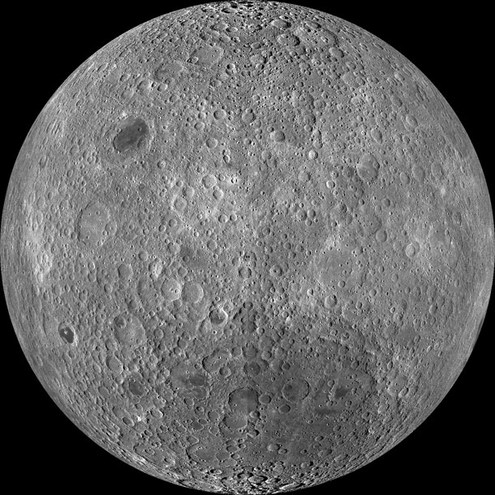The Not-so Dark Side of the Moon!
You may have seen the moon before, and you might even assume that you've seen it all. I mean why wouldn't you have; The Earth spins, the Moon spins...it would make sense that we must be able to see the Full-Moonty. Well this assumption would just be wrong.
You see the Moon and us rotate together in a weird sort of geocentric harmony that means that we never really see the dark side of the moon; That is until now, of course. Scientists have managed to use imaging satellites to stitch together an incredible 15 thousand images to show us the hidden moon!
The far-side looks quite different than the near side. It’s almost entirely covered in craters, while the near-side is dominated by huge lava filled "seas" or maria. Why is this you might ask; Well, it’s known that the crust on the near side is thinner, so it’s easier for big impacts to have punched holes in the crust and allowed magma to bubble up back when the moon had a molten core. (Gravity, inertia and centripetal forces account for a thicker outside crust.)
Also as the far side is more exposed to the elements flying at it, it's more covered in impact scars (i.e. the craters.)
Cheers to exploration of the moon, it still fascinates us in 2011!
-D-
[DiscoverMagazine]
You see the Moon and us rotate together in a weird sort of geocentric harmony that means that we never really see the dark side of the moon; That is until now, of course. Scientists have managed to use imaging satellites to stitch together an incredible 15 thousand images to show us the hidden moon!
The far-side looks quite different than the near side. It’s almost entirely covered in craters, while the near-side is dominated by huge lava filled "seas" or maria. Why is this you might ask; Well, it’s known that the crust on the near side is thinner, so it’s easier for big impacts to have punched holes in the crust and allowed magma to bubble up back when the moon had a molten core. (Gravity, inertia and centripetal forces account for a thicker outside crust.)
Also as the far side is more exposed to the elements flying at it, it's more covered in impact scars (i.e. the craters.)
Cheers to exploration of the moon, it still fascinates us in 2011!
-D-
[DiscoverMagazine]



 RSS Feed
RSS Feed